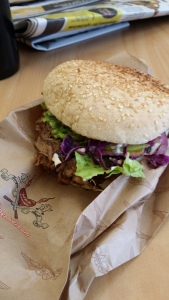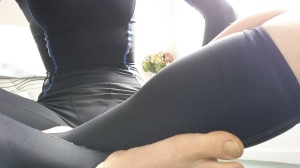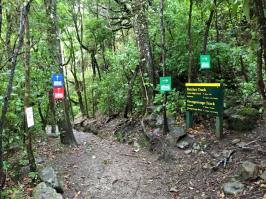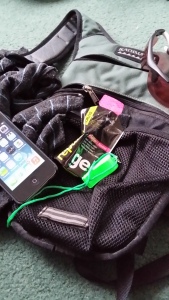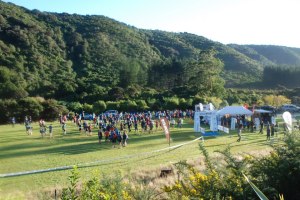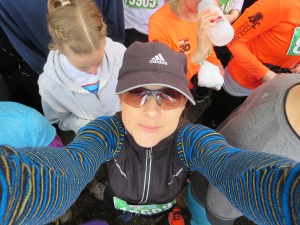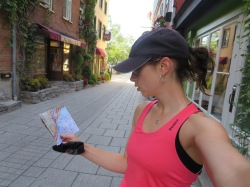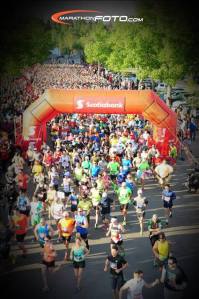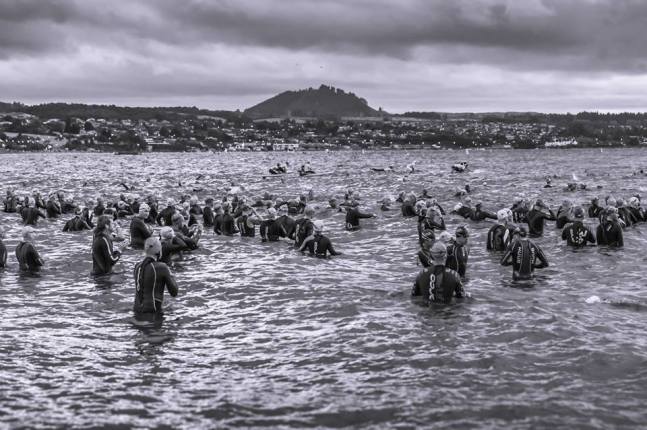
Photo: Jack McKenzie Photography
There were a lot of tears at the start line of IronMan New Zealand 2017.
And this time, none of them were mine.
As the 1200 IronMan competitors and I started the 3.8km swim, I focused on my race plan: draft as much as possible, be steady, focus on technique. Site the marker buoys often. Stay calm when others swim over you.
My train of thought stayed on this unemotional track: nutrition, pacing, technique … I was, oddly, in the mental space I experienced for every other race.
But that’s not right. This is IronMan! Why wasn’t I buzzing?
Last year, for my first IronMan, it felt like my whole life began and ended with that race.
After all, I had spent 10 months training to get to the start line. The time, effort, emotion and sheer mental energy of training were like nothing I had ever gone through. And so wading into the water to the start, I remember feeli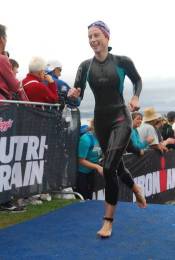 ng utterly overwhelmed by what I was about to attempt.
ng utterly overwhelmed by what I was about to attempt.
I remember swallowing back the tears.
I also remember having an amazing time. Because once the race began, my mind was a child on a rollercoaster, high on fizzy drink … “I’m doing IRONMAN! I going to be an IRONMAN! I’m actually doing this!” And so it went, all flippin’ day.
I waved to everyone I knew on the sideline and many others who I didn’t. I loved the banter and high fives. I thanked every volunteer I met, because heck, this was the best day of my life (see stupid grin in image above).
The difference between the two races was startling, to the point where I found myself wondering in IM #2, “am I even having fun?” (See game-face in image below).
Nothing, it seems, can compare to your first. And the difference, I theorise comes down to self-doubt. I mean, as a first-timer, I had no proof that I could actually finish this thing. The very real possibility of failure haunted me throughout my training. But as I plodded along in IM#1, self-doubt dissipated. And in its place was that giddy wo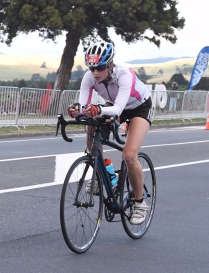 nder.
nder.
My boyfriend, ultrarunner extraordinaire, has had a similar experience. He says each of his 15 ultras was special for its own reason, but there was one exception.
“No one can take my first 100-miler away from me. I had to pinch myself because I was actually doing what I thought was impossible.”
He’s since switched to Muay Thai and similarly, the intensity of emotion invested leading up to his first fight was incredible.
But while the highs that came with a successful first fight were pretty high, he questions if it’s sustainable or even desirable to invest that much emotion into it long-term.
“It’s such a huge thing and if I’m to keep training for more fights, I need it to be a smaller part of my life.”
Likewise, there’s no way I could relive the emotional journey of my first IM. The emotional toll was far too great for it to be a regular feature in my life.
My former coach Dave Creamer, who has 15 IronMans to his name, provides some insight to how future IMs might look for me.
Throughout his IM career, his race day mindset remains focused on executing his game plan. “I’m always a little nervous pre-race, as I should be. But I’m a little more relaxed as each year passes.”
Dave reminds me that there’s no room for complacency, regardless of how many IronMan races you have under your belt.
“IronMan is a beast that needs to be respected. Every time you finish it, is an outstanding day.”
He’s right. In hindsight, IM#2 was an outstanding day. I finished happy, proud and absolutely stuffed. In fact, I haven’t ruled out returning for another.
But if I do, I just need to forget the race plan long enough to smile and wave.
I need to remember that IronMan is really really hard.
Because, as Dave says, IronMan is a beast.
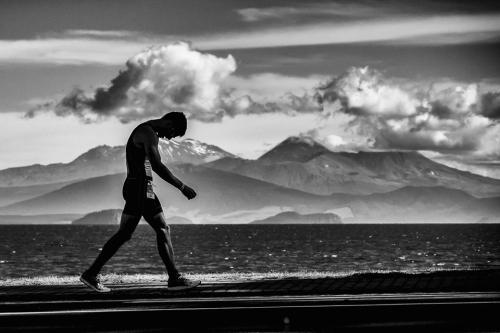
Photo: Jack McKenzie Photography

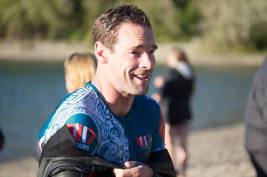 he got up before sunrise to run, bike or swim. That mental image would push the 35-year-old to his feet. He would ride his bike to the pool, swims 200 lengths and sometime around 8.30am he would sit down at his office desk to begin his working day.
he got up before sunrise to run, bike or swim. That mental image would push the 35-year-old to his feet. He would ride his bike to the pool, swims 200 lengths and sometime around 8.30am he would sit down at his office desk to begin his working day.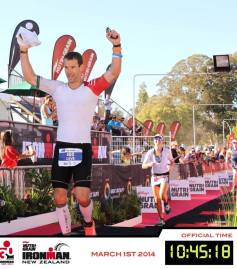 eronautical publications.
eronautical publications.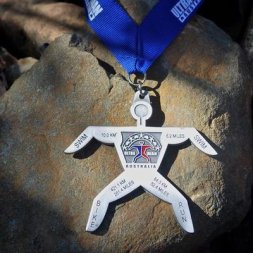
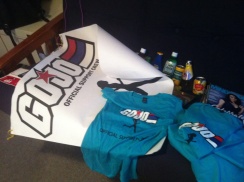
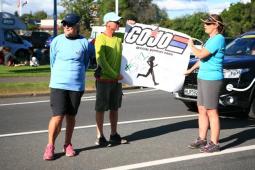 e sun had gone down and the temperature had dropped. Surely they’re over this? But no, they were still there. Still waving and yelling.
e sun had gone down and the temperature had dropped. Surely they’re over this? But no, they were still there. Still waving and yelling.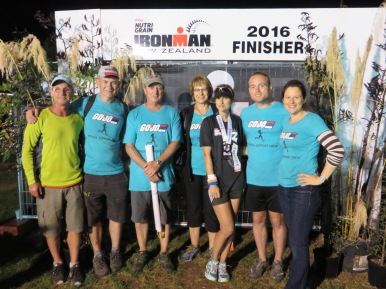


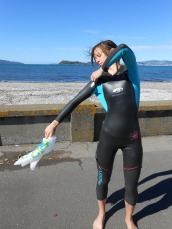
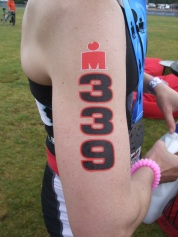
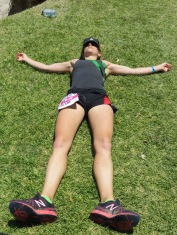 As I approach race day, those just-too-hard-days are becoming more frequent. Physically, I doubt my training is suffering as I’m starting to taper anyway. But mentally I’m in a war zone, which is rapidly wearing away the energy stores I have left.
As I approach race day, those just-too-hard-days are becoming more frequent. Physically, I doubt my training is suffering as I’m starting to taper anyway. But mentally I’m in a war zone, which is rapidly wearing away the energy stores I have left.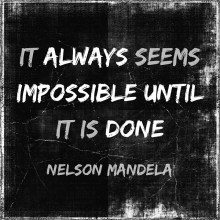 work an hour early tomorrow so I can get to the pool before the lane becomes crowded with the faster, more aggressive after-work set. Instead of dwelling on how long the swim will take (all 130 lengths), I’m going to cruise through it in no great hurry. I’m going to enjoy the sensation of gliding through the water and use the time to remember why I fell in love with triathlon in the first place.
work an hour early tomorrow so I can get to the pool before the lane becomes crowded with the faster, more aggressive after-work set. Instead of dwelling on how long the swim will take (all 130 lengths), I’m going to cruise through it in no great hurry. I’m going to enjoy the sensation of gliding through the water and use the time to remember why I fell in love with triathlon in the first place.